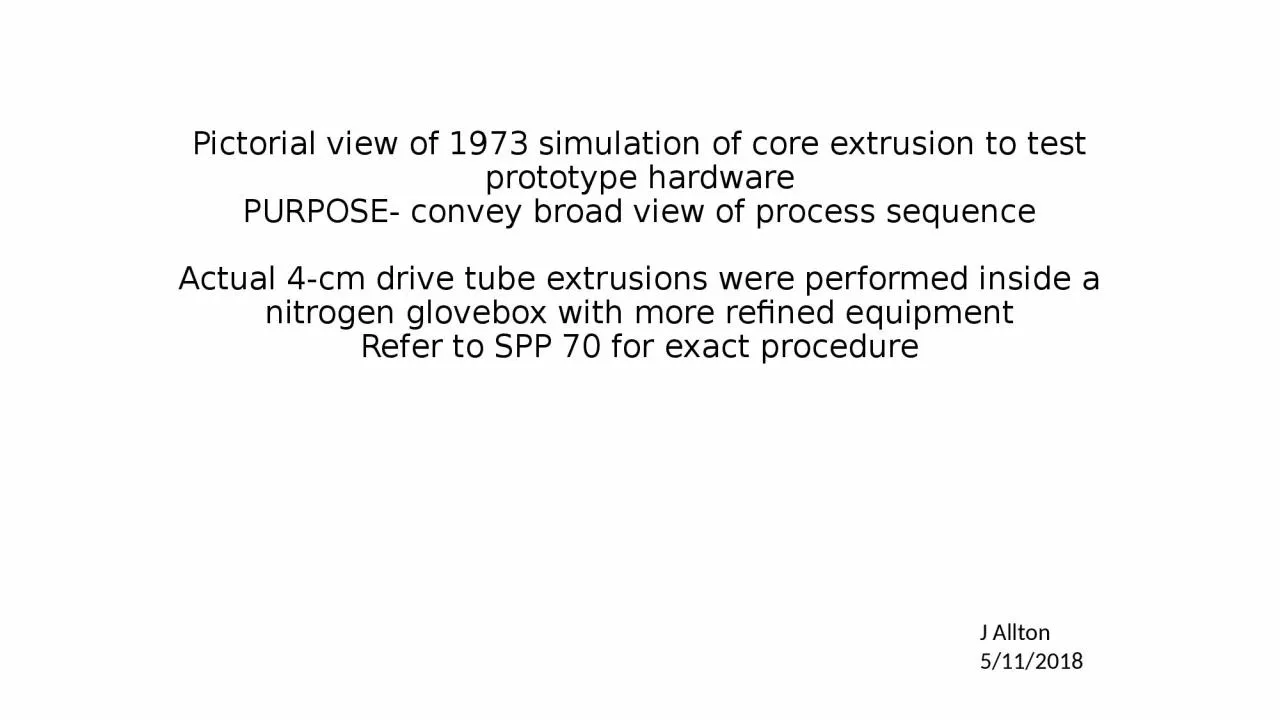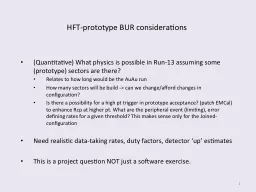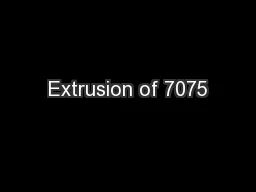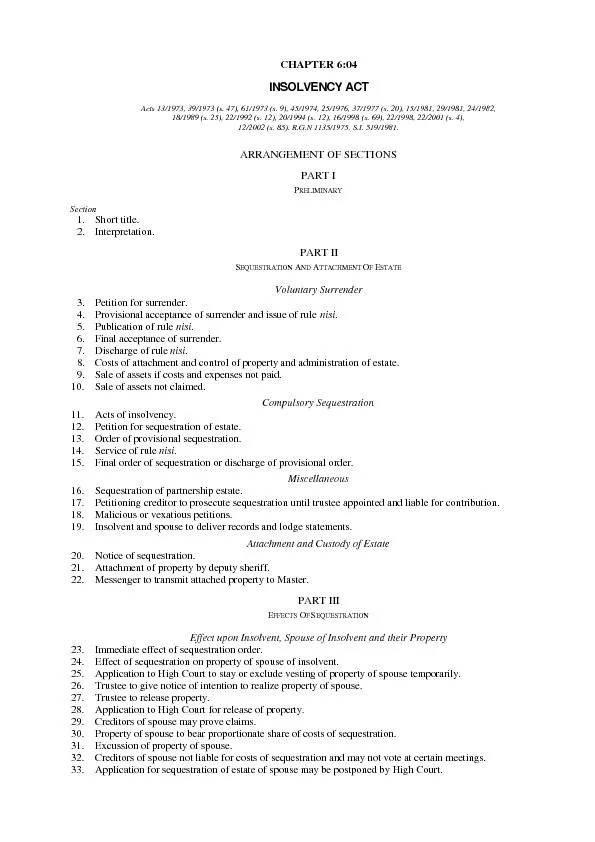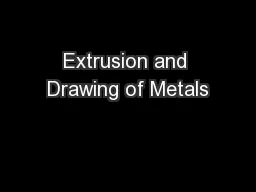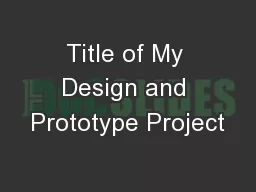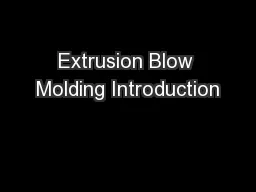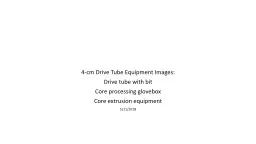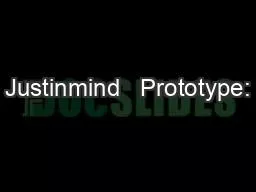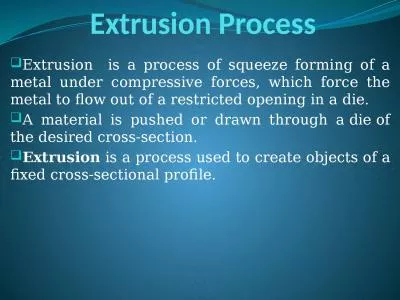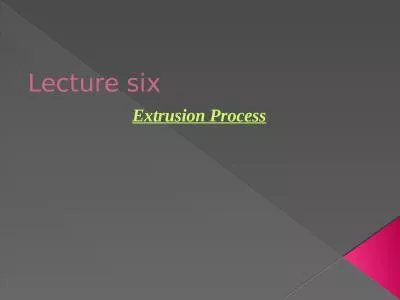PPT-Pictorial view of 1973 simulation of core extrusion to test prototype hardware
Author : emma | Published Date : 2023-10-04
PURPOSE convey broad view of process sequence Actual 4cm drive tube extrusions were performed inside a nitrogen glovebox with more refined equipment Refer to SPP
Presentation Embed Code
Download Presentation
Download Presentation The PPT/PDF document "Pictorial view of 1973 simulation of cor..." is the property of its rightful owner. Permission is granted to download and print the materials on this website for personal, non-commercial use only, and to display it on your personal computer provided you do not modify the materials and that you retain all copyright notices contained in the materials. By downloading content from our website, you accept the terms of this agreement.
Pictorial view of 1973 simulation of core extrusion to test prototype hardware: Transcript
Download Rules Of Document
"Pictorial view of 1973 simulation of core extrusion to test prototype hardware"The content belongs to its owner. You may download and print it for personal use, without modification, and keep all copyright notices. By downloading, you agree to these terms.
Related Documents

